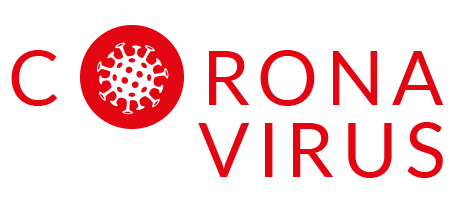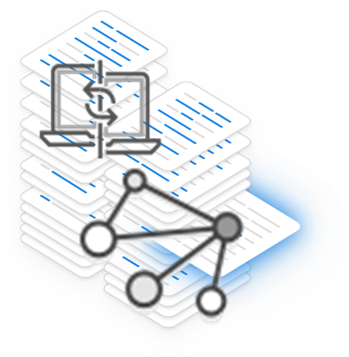Dr. Joel R. Coats, Distinguished Professor of Entomology & Toxicology, sheds some light on the causes of everchanging insecticide resistance
The Golden Age of Insecticides provided powerful new synthetic insecticides, starting in the 1940s, in classes that were, chronologically, chlorinated hydrocarbons, organophosphates, carbamates, pyrethroids, neonicotinoids, and several others. These replaced the many old-fashioned, more hazardous chemicals used to control insects: cyanide, mercury compounds, arsenic compounds, lead, copper, nicotine, and rotenone. As each successive new class of synthetic ‘miracle chemicals’ burst on the market, they were immediately welcomed as the answer to growing resistance issues with the current classes of insecticides. Subsequently, each new class of insecticides was heavily used, often to the point of over-use and development of new resistance.
Factors contributing to insecticide resistance
Insect populations develop resistance to an insecticide through a ‘natural selection’ process through which a few mutants in the population may tolerate the chemical better, while the susceptible insects succumb to it. The survivors (the tolerant ones) mate and produce a new generation of tolerant insects; eventually, the progeny are so tolerant that they are said to be resistant to the chemical, sometimes to that whole class of insecticides. Further, insect populations are often enormous, with a vast gene pool that is highly diverse, with many alleles at many loci, which translate to a high likelihood of some surviving the insecticide in each generation. Repeated use of an insecticide against a pest invariably initiates the selection process, and some long-season crops, such as citrus, nuts, or cotton, need treatments for 10 months or more, necessitating many sprays. Some short-season crops can require many treatments, especially those for which cosmetics can influence their consumer acceptability, like some fruits or vegetables. The logical way to break the cycle of resistance development is to rotate the chemicals used or even the classes of chemicals used against a pest, but it is not a simple solution; like so many stories in science, it’s complicated! Many growers tend to select the same brand product month after month and year after year, because they become comfortable with a product and the dealer who sells it. Marketing strategies have often focused on the locked-in grower who will dependably purchase the tried-and-true product. Typically, there may be several registered products to choose from, but the list is always somewhat limited, and many other aspects factor into the purchase decisions: costs, convenience of application, speed of action, safety to users and to other non-target species, length of protection, etc. When the different products are considered, there is always a limited number of classes of insecticides available (perhaps two or three), and that can also contribute to continual or repeated use of the same chemical or class of chemicals. In each case of resistance, it is imperative that we understand the mechanism by which the insects withstand the effects of the applied insecticide.
Mechanisms of Resistance to Insecticides
There are two very important and widespread mechanisms of resistance that have been uncovered by insect toxicology researchers: (1) enhanced rates or pathways of detoxification by the insect, and (2) altered target site. These two mechanisms have been found to be ubiquitous around the globe and across hundreds of species of insect pests, as well as ticks and mites. Commonly the immediate response to a resistant population of pests is to increase the application rate or increase the number of treatments. Either one of these tactics tends only to exacerbate the problem by exerting more selective pressure on the population that has already been developing resistance. Another tactic is the use of combination products that contain two different classes of insecticides.
Enhancement of the detoxification of an insecticide commonly develops through increases in enzymatic activity, specifically one or more that can detoxify the insecticide molecule. Out of possibly 100 detoxifying enzymes produced by an insect, typically one or two are enhanced in a resistant strain to a level that they can render the toxicant harmless before enough of the insecticide reaches the target site and cause death. There can be upregulation of the gene(s), more copies of the gene(s), or more active forms of the enzymes, but the net effect is a much shorter half-life of the insecticide molecule in the insect body and, presumably, a lower amount reaching the insecticide’s target site.
The typical types of enzymes that cause rapid detoxification can be oxidation enzymes, hydrolysis enzymes, or glutathione-S-transferases (GST’s). The oxidative ones are usually cytochrome P450-dependent mono-oxygenases (often in the CYP-6 or CYP-9 families of those enzymes), which are very active in splitting oxygen (O2) to incorporate one of the oxygen atoms into the xenobiotic (insecticide in this case) molecule, to produce a hydroxyl, keto, aldehyde, epoxide, or acid moiety on the insecticide molecule. Once oxidized most insecticide molecules become less toxic and more readily excreted. The hydrolytic enzymes often specialise in hydrolysing carboxyl esters, phosphate esters, or amides. In addition to those carboxylesterases, phosphatases, and amidases, there are other more specialized hydrolytic enzymes in some species; a few can hydrolyse chlorine or bromine off a carbon atom. Most hydrolysis reactions totally detoxify the insecticide encountered. Glutathione-S-transferases are especially valuable at removing an alkyl group or halide from a xenobiotic, by reacting it with glutathione (mini-peptide, only three amino acids in length); like oxidation and hydrolysis, reaction with glutathione typically detoxifies the insecticide. Note: there are special cases in which oxidation can actually activate the insecticide molecule to a more potent state; that is not known to happen with hydrolases or GST’s.
Target site alteration has been shown to occur in many resistant strains of pests. Most classes of insecticides have their target sites in the nervous system of the insect, tick, or mite. Common target sites are the acetylcholinesterase enzyme, acetylcholine receptor, sodium channel, GABA-receptor at chloride channels, or octopamine receptor. All of those are complicated proteins, composed of multiple subunits made up from hundreds or thousands of individual amino acids. As molecular biology has opened a window into the detailed structure of those receptors, enzymes, and channels, researchers have noted many cases in which just one, two, or three changes in amino acids coded for at crucial locations in these large proteins. That can result in a receptor, enzyme, or channel that is totally insensitive to an insecticide that had heretofore inflicted serious damage to that receptor, enzyme, or channel.
Four other less common mechanisms of insecticide resistance have been identified. They are decreased penetration through the insect cuticle, more rapid excretion, sequestration, or a behavioural avoidance of the insecticide.
Next time: How can we overcome resistance to insecticides? Will a resistant population revert to being susceptible if the selective pressure is removed? What are the keys to prevention of the development of resistant strains? Why are terpenes’ and plant essential oils’ mechanisms of insecticidal activity promising against resistant strains?
Please note: This is a commercial profile
More About Stakeholder
-
Dr Joel Coats – Department of Entomology
Dr Joel Coats discusses his work in the field of Entomology and his work at the Iowa State University, including key aspects of his research.










 Access Rights | Content Availability:
Access Rights | Content Availability: 










 APU Content Aggregation Service
APU Content Aggregation Service